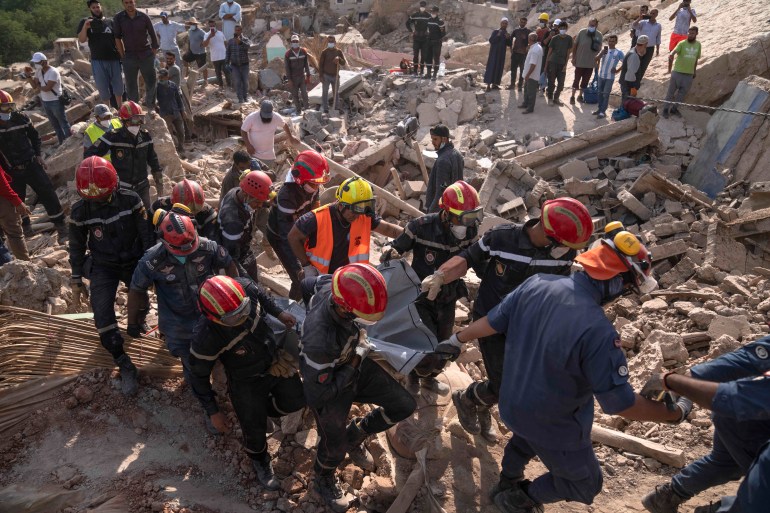Hopes of finding any more survivors are fading given blocked roads are impeding access to the worst-hit areas in remote villages in rural, mountainous areas.
Morocco is now well past the 72-hour window when rescues are considered most likely, yet survivors are in some cases found well beyond that period.
The death toll currently stands at 2,901, Morocco’s Ministry of the Interior said on Wednesday, and 5,530 have been injured in the country’s deadliest earthquake since 1960 and the most powerful since 1900.
Vehicles packed with supplies were inching up winding mountain roads to deliver desperately needed food and tents to survivors. Search teams were in places still scouring the rubble for the living.

In some of the more remote locations, there was still little sign of outside help. Al Jazeera’s Stefanie Dekker, reporting from the village of Imi N’Tala, said the situation is dire.
“The village is completely flattened and devastated. The stench of death is everywhere. There are still at least 40 bodies under the rubble,” Dekker said.
“Massive chunks of the mountain came down, smashing into these villages. Entire families have been wiped out.
“One man was pointing at his home. There was a white door that remained standing, and he was telling us that that was the door to his house. He started crying about how he ran out of the door and everything collapsed around him. He lost both his sons and his wife. He was screaming because he saw his wife’s abaya under the rubble. It was heartbreaking.
“The problem is the access to these places. There are narrow, winding roads. There are still many places that they have not been able to reach.”

So far, search and rescue teams from Qatar, the United Kingdom, Spain and the United Arab Emirates have been operating on the ground alongside Moroccan emergency teams, the military and other officials.
The United Nations and the United States have also sent teams of disaster and emergency experts to help assess the damage and coordinate the response.
Abdel Wahed Chafiki, head of the Menara district in Marrakesh, said it is difficult to determine the total number of victims.
He told Al Jazeera that the rugged mountainous terrain where the earthquake struck is making it a challenge to get to victims, but he stressed that local authorities are continuing their relief efforts and providing assistance.
Errachid Montassir, an activist and humanitarian worker, has been travelling with doctors to remote villages in the Atlas Mountains.
He said it took them five hours to reach the town of Ijjoukak because the road was blocked.
“It was a disaster and also a shock to see people still under the rubble there,” he told Al Jazeera.
“The army is doing [its] job to bring these people out of the ground, but also it’s very, very difficult to reach these places, so you can imagine that there is no food, but also there’s no blankets or beds where people can sleep.”
The village of Tikht, previously home to at least 100 families, is a tangle of timbers, chunks of masonry as well as broken plates, shoes and the occasional intricately patterned rug.
“Life is finished here,” said Mohssin Aksum, 33, who had family living in the tiny settlement. “The village is dead.”
Like many of the hardest-hit villages, it was a small rural place with a significant number of buildings constructed with a traditional mix of stone, timber and a mortar composed of mud.
Dozens of residents, mourning relatives and soldiers were gathered at the ruins. Several said they couldn’t remember any previous earthquake in the area.
“It wasn’t something people here thought about when building their houses,” said 23-year-old student Abdelrahman Edjal, who lost most of his family in the disaster.
Rebuilding is expected to be an enormous challenge for the North African country, which was already suffering economic woes and years of drought and now fears a downturn in its crucial tourism sector.
